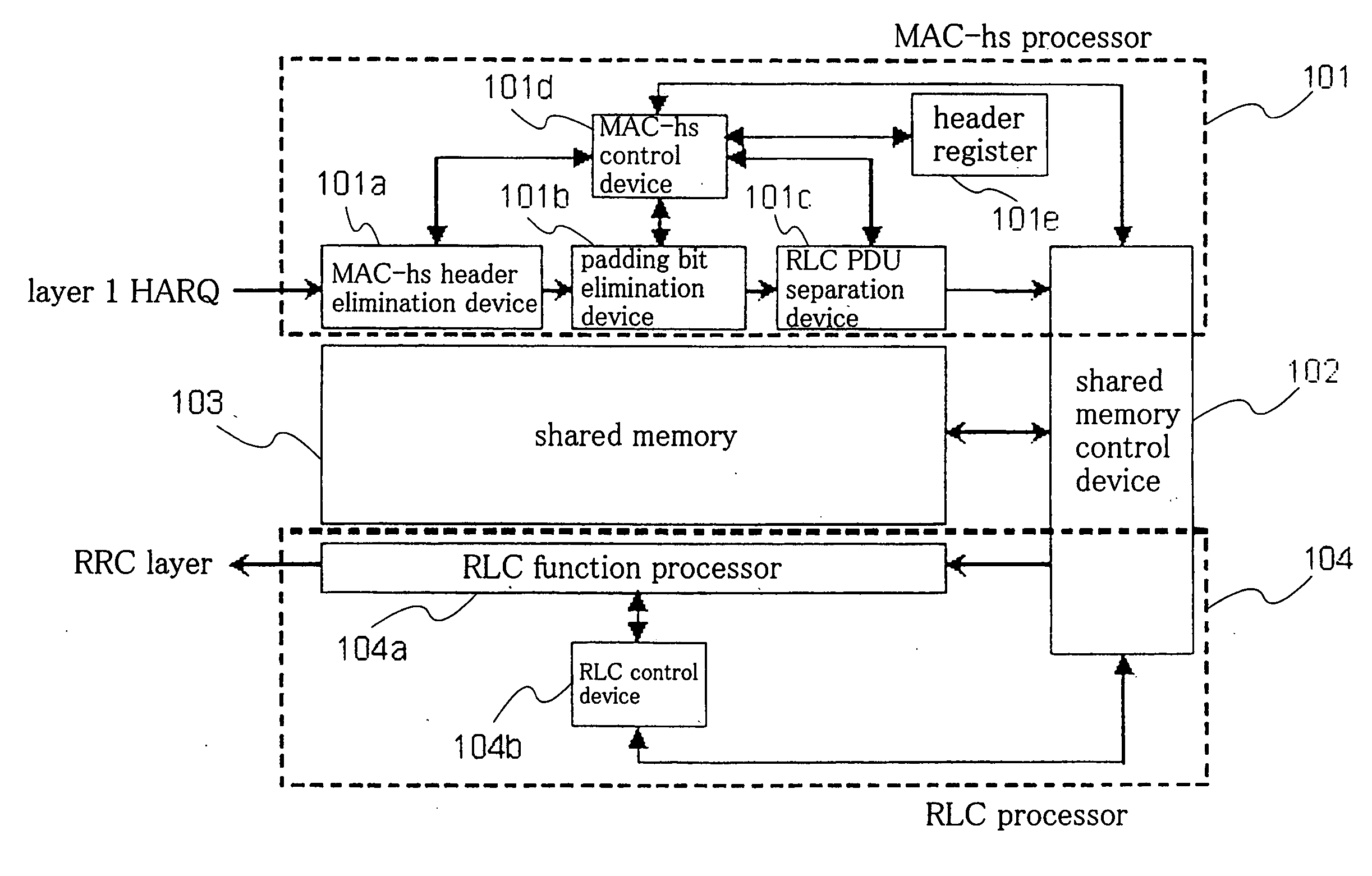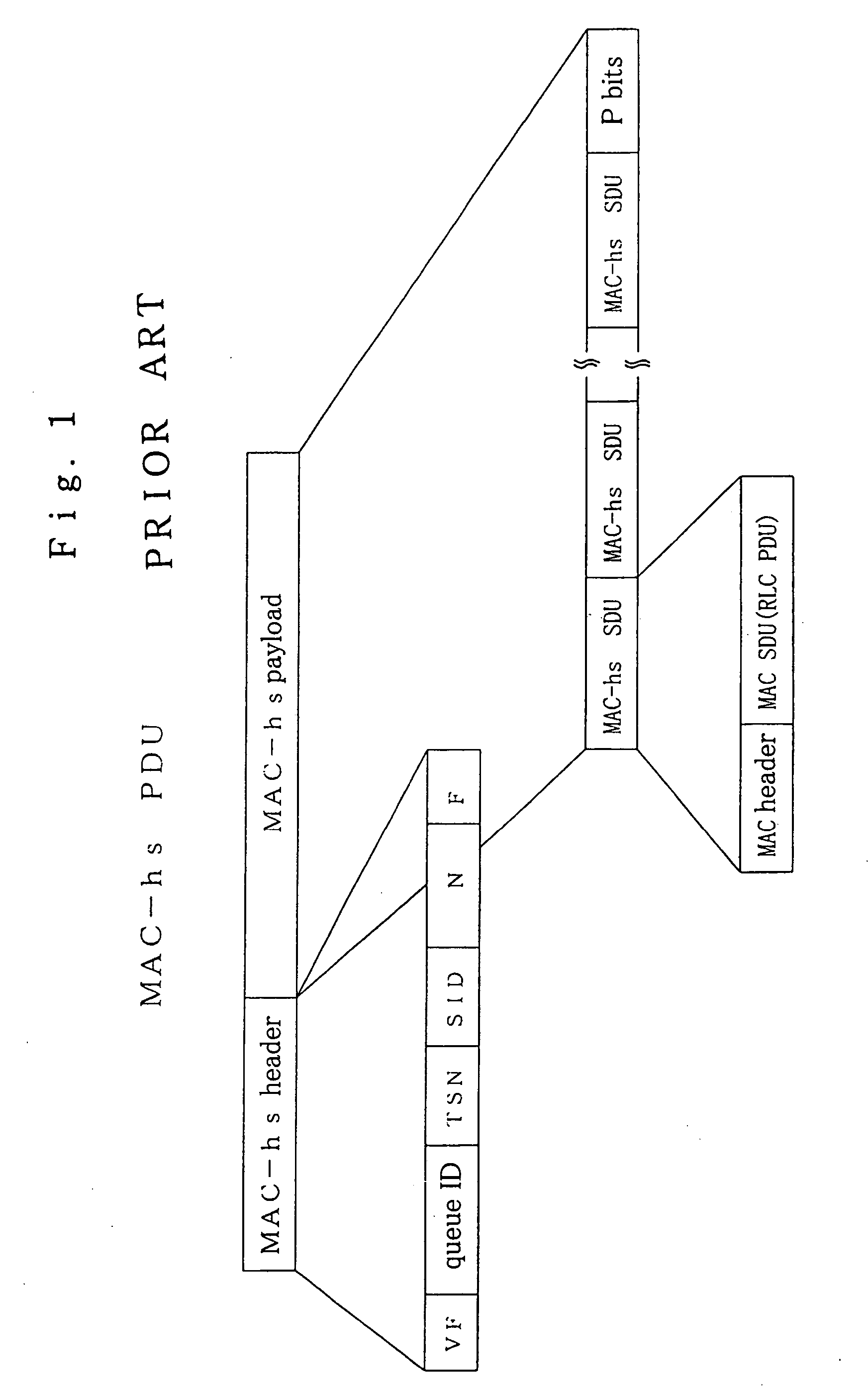Mobile radio communication terminal device capable of realizing a MAC-HS buffer and RLC buffer in one physical memory and suppressing memory capacity
a mobile radio communication terminal and buffer technology, applied in the field of mobile radio communication terminal devices, can solve the problems of significantly more redundant memory, complicated control of this process, and reduced memory to a minimum, and achieve the effect of suppressing the increase in memory capacity
- Summary
- Abstract
- Description
- Claims
- Application Information
AI Technical Summary
Benefits of technology
Problems solved by technology
Method used
Image
Examples
Embodiment Construction
[0066] Before describing the embodiment of the present invention, the following explanation first regards an outline of the present invention.
[0067] When HSDPA is added to a W-CDMA communication system based on the 3GPP as described hereinabove, a MAC-hs buffer is added as new memory in the MAC layer. However, the MAC-hs PDU that are the processing data units that are stored in this memory are of variable length, and as a result, there arises the problem that limiting the MAC-hs buffer to the minimum size necessitates a complex and difficult memory control method.
[0068] The present invention provides a solution to the above-described problem by focusing on the fact that the RLC PDU, which are the processing data units in the RLC layer, are not of variable length but are a uniform fixed length when MAC multiplexing does not occur, and moreover, when the SID (Size index IDentifier) of the RLC PDU is of only one type.
[0069] The following explanation first regards the typical configu...
PUM
 Login to View More
Login to View More Abstract
Description
Claims
Application Information
 Login to View More
Login to View More - R&D
- Intellectual Property
- Life Sciences
- Materials
- Tech Scout
- Unparalleled Data Quality
- Higher Quality Content
- 60% Fewer Hallucinations
Browse by: Latest US Patents, China's latest patents, Technical Efficacy Thesaurus, Application Domain, Technology Topic, Popular Technical Reports.
© 2025 PatSnap. All rights reserved.Legal|Privacy policy|Modern Slavery Act Transparency Statement|Sitemap|About US| Contact US: help@patsnap.com



